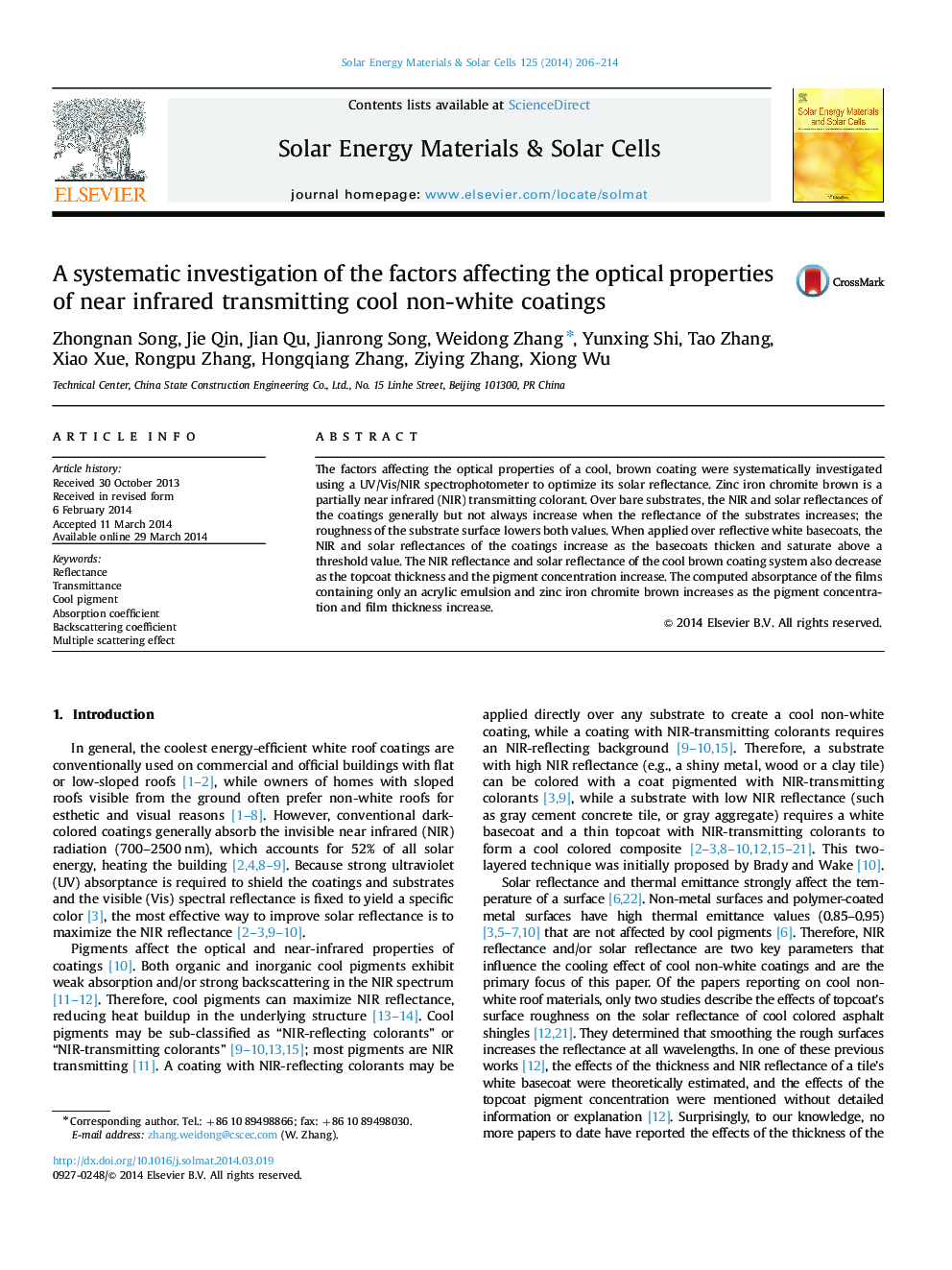| Article ID | Journal | Published Year | Pages | File Type |
|---|---|---|---|---|
| 78103 | Solar Energy Materials and Solar Cells | 2014 | 9 Pages |
A zinc iron chromite brown coating was identified to be an NIR-transmitting coating.The reflectance of cool coatings does not always increase with that of substrates.The reflectance of cool coatings increases with the thickness of white basecoats.The reflectance of cool brown coatings decreases with the thickness of the topcoat.The reflectance of cool brown coatings decreases with the pigment concentration.
The factors affecting the optical properties of a cool, brown coating were systematically investigated using a UV/Vis/NIR spectrophotometer to optimize its solar reflectance. Zinc iron chromite brown is a partially near infrared (NIR) transmitting colorant. Over bare substrates, the NIR and solar reflectances of the coatings generally but not always increase when the reflectance of the substrates increases; the roughness of the substrate surface lowers both values. When applied over reflective white basecoats, the NIR and solar reflectances of the coatings increase as the basecoats thicken and saturate above a threshold value. The NIR reflectance and solar reflectance of the cool brown coating system also decrease as the topcoat thickness and the pigment concentration increase. The computed absorptance of the films containing only an acrylic emulsion and zinc iron chromite brown increases as the pigment concentration and film thickness increase.
